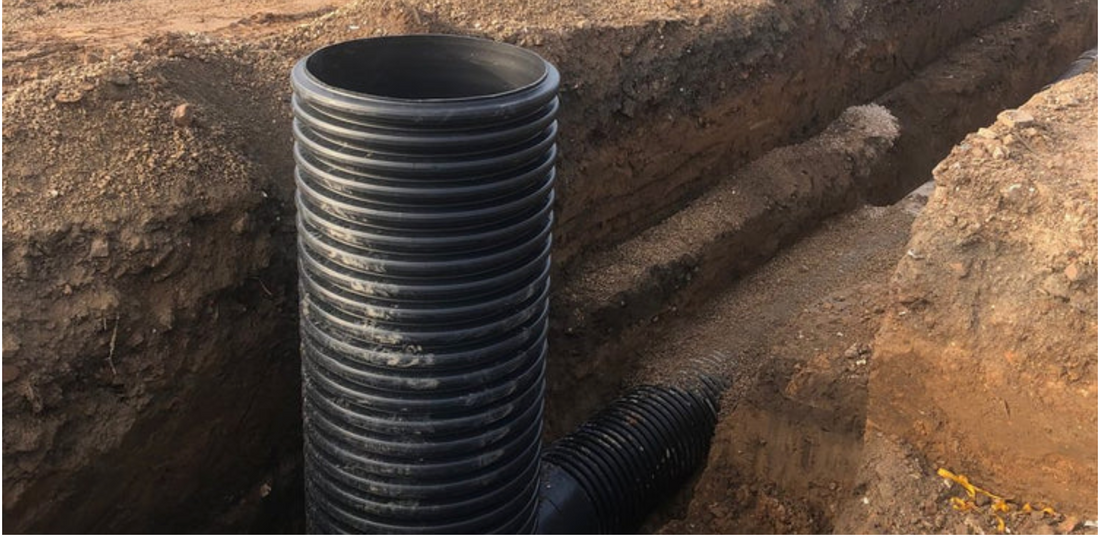An inspection chamber is typically used when access is required to a drainage system in order to carry out maintenance or clear blockages. At Cotterill Civils, we have inspection chambers available in a variety of sizes to fit your drainage requirements. All the drainage inspection chambers we stock meet the necessary industry and regulatory specifications for maintaining and clearing your drain pipes to an excellent standard.
Contents
When is it necessary to install an inspection chamber?
- Direction of pipework changes - When the direction of the pipework changes to an angle of more than 30 degrees. When a pipe has a large bend in it, the chances of clogging are significantly increased which means that the installation of an inspection chamber is essential.
- Interconnection of pipes - When multiple drain pipes connect at the same point, it is essential that they are monitored via an inspection chamber. This is required when two pipes meet at a junction at more than a 45 degree angle.
- Pipe length - When a straight run of pipe exceeds 22 metres.
- Different material - When two pipes are being connected that are made from different materials.
Every part of the drainage network should be accessible via cameras and drain rods, so it’s important to install the right number of inspection chambers to achieve this.
What are the parts of an inspection chamber?
An inspection chamber is made from three integral parts:
- Base
- Riser
- Cover
The base of the chamber sits at the bottom, and connects to the pipes. The riser is the vertical section that sits on top of the base, and is secured using rubber seals. The inspection chamber cover, (also known as an access or manhole cover,) sits above the surface, blocking unauthorised access to the chamber.
How deep should an inspection chamber be installed?
Generally speaking, this largely depends on the size of the inspection chamber, however here are some guidelines.
There are generally two sizes of chambers: 450mm and 320mm in diameter. With the smaller chambers (320mm diameter) you can only use them to a depth of 600mm. If you go any deeper, it then becomes impossible to bend a drain rod when you come to inspect it for blockages. In contrast, the larger chambers (450mm) can be installed to a depth of 1.2m, although you can go down as far as 3m if you use a restricted access cover.
When installing an inspection chamber, it is vital to ensure all health and safety regulations are observed, and the chamber is placed at the appropriate depth for its application, which can vary. Our team of experts are always on hand to offer guidance and advice to make sure your product is compliant with the relevant guidelines.
At Cotterill Civils, we have a wide variety of inspection chambers to choose from, which offer an ideal choice for accessing your underground drainage. Our team of experts can give high quality advice that is tailored to your project’s requirements. They can give advice as to the best inspection chamber for you, and how many you may require.
We offer a bulk discount on inspection chambers, speak to a member of our team and we’ll provide a competitive quote.
Call 0121 351 3230 today for more information, our team is happy to help!
Alternatively, fill out our enquiry form:





